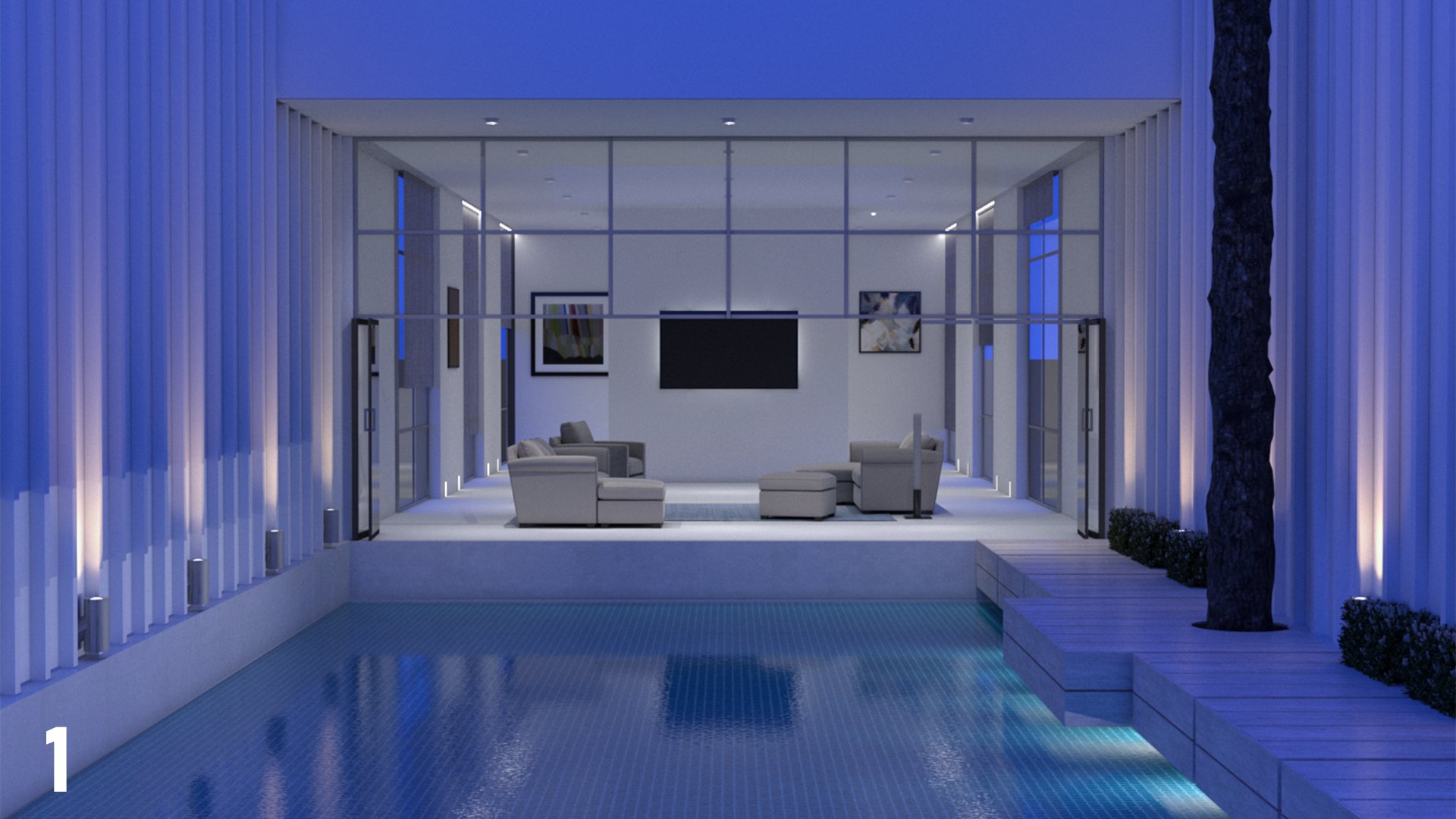
V-Ray Beginners to Advanced 2024
Bring your creations to life and learn how to visualize in V-Ray for Rhino. Requires trial or full version of V-Ray for Rhino.
-
V-Ray Introduction
-
1 - V-Ray and Interface Introduction
Welcome to V-Ray! We go over how to navigate the interface and go over what is possible in V-Ray.
-
2 - Camera Placement and View Setup
Let’s set up and different view ports, and place cameras to get the perfect shot for creating renders!
-
3 - Render Presets
Go over the necessary options for basic render setup, render quality control, file location etc.
-
4 - V-Ray Sun
Setup the Rhino-V-Ray Sun and adjust the settings to properly light your environment.
-
5 - V-Ray Lights Introduction
We go over the different kind of lights in V-Ray and how to properly use and setup a rectangle light and change the parameters.
-
6 - Light Hierarchy
How do light hierarchies work? Let’s setup a simple scene with various lights that differ in temperature and intensity.
-
7 - Frame Buffer / Over Exposure
Let’s learn how to use the frame buffer to correct over exposure in certain scenes.
-
8 - IES Lights
An introduction into IES lighting and how to properly set them up with the correct parameters to suit your scene.
-
9 - V-Ray Materials
An introduction into V-Ray default materials, how to apply them to objects and adjust material parameters.
-
10 - Material Mapping
Learn how to map materials onto objects to get the correct size and positioning of your material maps.
-
11 - HDRI Interior Lighting
An introduction into HDRI lighting and how to set it up for an interior lighting scene.
-
-
Modern Interior Basics
-
1 - Interior Lighting Scene Setup
Learn the Mise En Scene of a interior render view and how to set up each element correctly.
-
2 - Materials and Reflection
An introduction into HDRI lighting and how to set it up for an interior lighting scene.
-
3 - Depth of Field
Let’s learn what depth of field is and how to properly utilize it to create a photo-realistic scene!
-
4 - Photoshop Post Production
Let’s hop into Adobe Photoshop to post process our render.
-
-
Delicate Room Lighting and Materials
-
1 - Room Lighting Setup
Learn all the elements that go into setting up a realistic and convincing delicate room scene.
-
2 - Curtain Material
Create a curtain material using two-sided V-Ray material from scratch.
-
3 - Carpet Material
Create a carpet using V-Ray Fur, and learn how V-Ray Fur works.
-
4 - Post Process
Now we put everything together and create a render which is post-processed in the frame buffer as well as Photoshop.
-
-
Evening House Render
-
1 - Primary, Secondary and Dome Lighting
Let’s set up our primary and secondary lighting in our house scene, then add a dome light to complete the light hierarchy.
-
2 - Emissive Materials
Learn how to use emissive materials by creating various lights within our scene.
-
3 - Material Application
Add V-Ray materials to the scene and adjust parameters such as diffuse, reflection, coat etc.
-
4 - Water and Pool Materials
Using the V-Ray water material we will create a realistic looking pool.
-
5 - Ambient Occlusion
Set up the ambient occlusion render element to be used in Photoshop, this allows us to more accurately define shadows.
-
6 - Photoshop Post Process
Now let’s post-process our final render in Photoshop!
-
-
Outdoor Photography Methods
-
1 - Outdoor Scene Setup
Let’s setup an outdoor render view using REAL photography methods including framing, lens length etc.
-
2 - Glass Material and Interior
Learn the different parameters of glass materials and how to give glass that realistic look.
-
3 - Adding Materials and Lighting
Let’s complete the scene by adding all materiality to our components.
-
4 - V-Ray Sun
Let’s add our final render elements and bring it into Photoshop for post-processing.
-
-
V-Ray Next and V-Ray 6 Features
-
1 - Chaos Cosmos Overview
Chaos Cosmos is a powerful tool for populating your environment, let’s take a look at what it is and how to use it!
-
2 - Lens Effects and Glare
Adjust your renders in frame buffer view to add realistic lens effects and glare.
-
3 - V-Ray Animation
Let’s create a simple animation using V-Ray and the default Rhino Animation tools!
-
